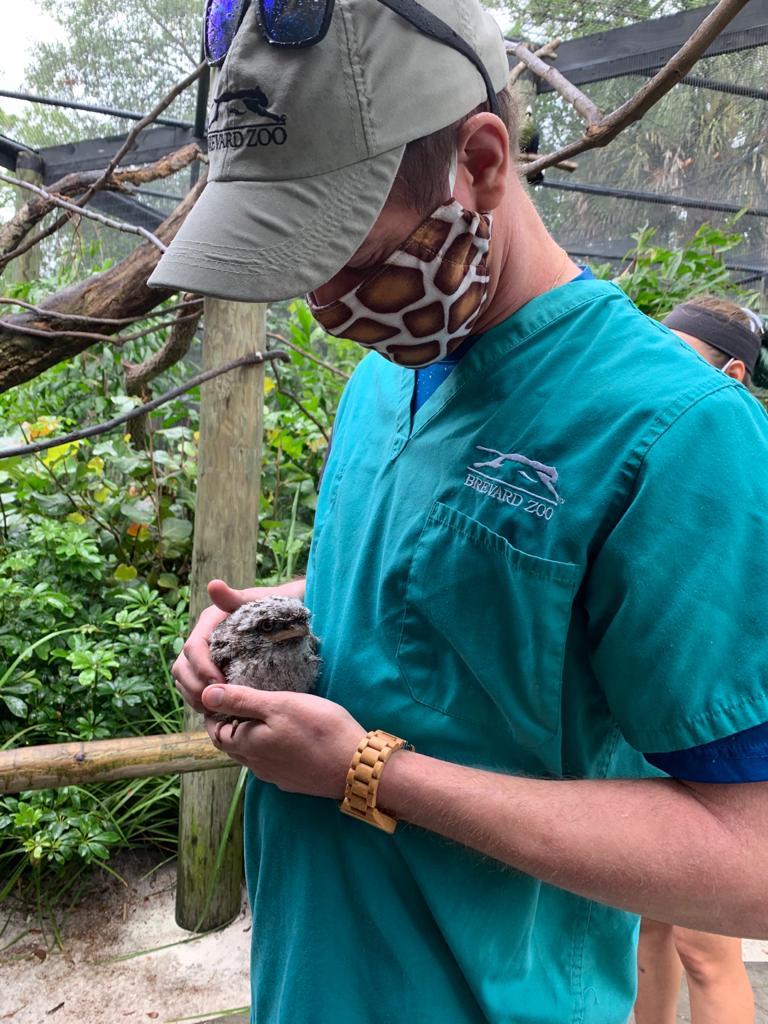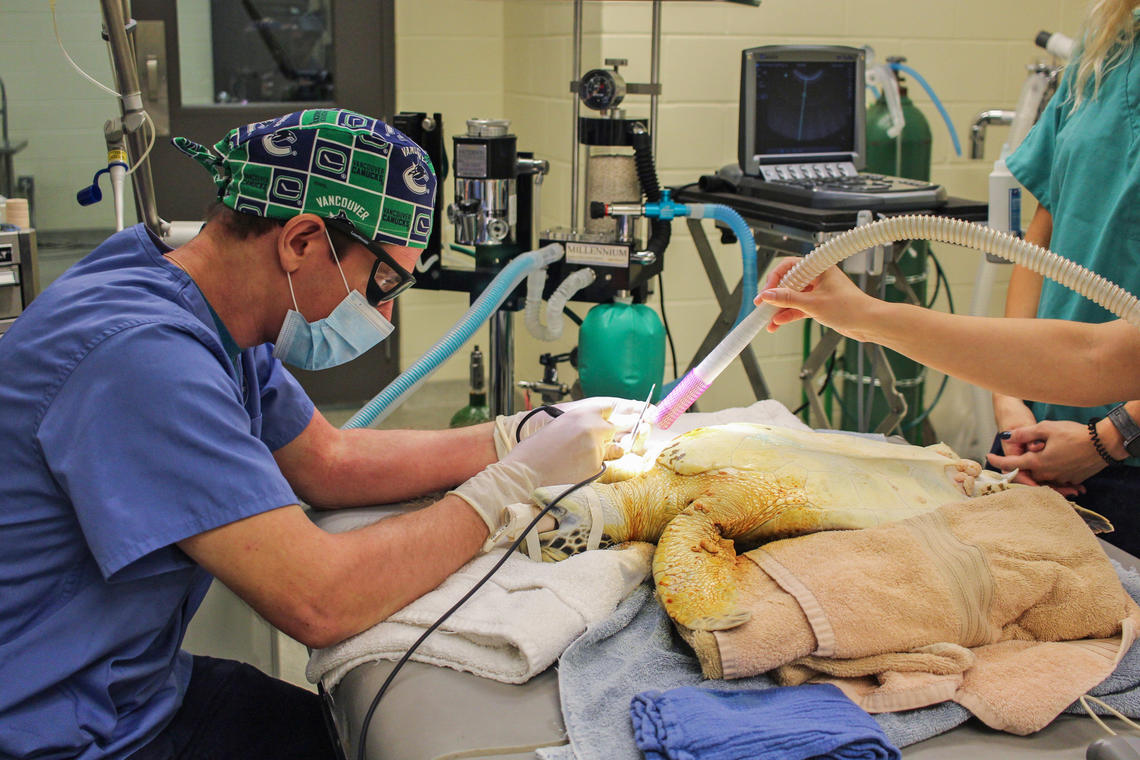Aug. 9, 2021
Want to work with lions and tigers and bears? Here’s what it takes to be a zoo vet

This is an exciting summer for three University of Calgary Faculty of Veterinary Medicine (UCVM) veterinarians. They are all embarking on residencies at zoos.
Dr. Alan Glassman, DVM'18, is taking a zoological medicine residency at the Toronto Zoo. Dr. Shannon Toy, DVM'19, is doing her internship at the Calgary Zoo. And Dr. Emma Vaasjo, DVM, a UCVM Master of Science candidate, is at the St. Louis Zoo in Missouri.
An internship is the first stepping stone to zoological medicine, according to Dr. Doug Whiteside, associate professor of conservation medicine at UCVM, and senior veterinarian at the Calgary Zoo. These one- to two-year programs provide mentored clinical and didactic training for graduate veterinarians to develop skills in a specific area of veterinary medicine. Students have a chance to confirm if they want to pursue a particular specialty path afterwards.
The internship is followed by a residency, which is a three- to four-year specialization program. Whiteside says most zoological medicine residencies in North America are certified by the American College of Zoological Medicine. They must meet specific criteria for structured teaching, mentorship, and research, and they provide a pathway for the resident to be able to qualify to take their specialty examinations and become board certified as a specialist in zoological medicine.
Zoo residencies are like gold dust
“There aren’t that many of these residencies available,” says Whiteside, who is a primary advisor for the zoological medicine internship, as well as a primary instructor for the zoological medicine rotations for final year students based out of the Calgary Zoo. “They are quite coveted.”
So, what did these UCVM students need to do to get this far along the path to a career in zoological medicine? Glassman and Whiteside reflect on the journey so far.

Sporting a giraffe mask, Alan Glassman looks after a tawny frogmouth chick.
Kyle Donnelly.
“The big thing with Alan was that he had the strongest demonstrated interest and passion for zoo medicine in his class,” says Whiteside. “Right from the start, he voiced his interest in zoo and wildlife medicine and participated in organizing events with the ecosystem and public health club. He shadowed me at the Calgary Zoo and was a great student in the third-year zoological medicine course.”
Glassman also did several zoo externships in his fourth year to help cement his experiences and confirm his interest.
But Glassman’s interest in zoos began long before he started at UCVM.
Dragging his parents to the zoo
“I was always fascinated by zoos, and I dragged my parents to the Calgary and Edmonton zoos any time I could. I was really interested in the animals and the conservation work being done to save them,” says Glassman. “My mom was a nurse, so medicine was always something we talked about at home.”
He liked the idea of helping animals not doing as well in the wild and says UCVM’s focus on learning about all animal species — small, large, rural, domestic, wild, and everything in between — really helped. It gave him the foundation and the opportunities he needed to start working towards his goal of a zoological medicine career.
After graduating with his Doctor of Veterinary Medicine, Glassman did a one-year small animal medicine and surgery internship at Oklahoma State University, where he spent time working in different specialties including emergency, internal medicine, surgery, ophthalmology, diagnostic imaging, and others. During this time, he was also able to participate in a few externships at zoos.
From there he landed a two-year internship based out of Brevard Zoo in Melbourne, Florida, which also included time at Lion Country Safari and SeaWorld Orlando.

A green sea turtle at the Brevard Zoo undergoes fibropapilloma removal surgery. The rehab activities at Brevard Zoo's Sea Turtle Healing Center are conducted by personnel under FWC permit #MTP 206.
“I love my program. I work with an amazing set of people in multiple different places.” He credits the program with giving him the training and experience he needed to secure his residency at the Toronto Zoo.
Glassman is excited about working with the large and diverse collection at the Toronto. His interests are wide-ranging, but for him this is the final step to qualify to write the board exams and become a member of the American College of Zoological Medicine. His future goals include working in a zoo, but also contributing to clinical research and helping train the next generation of veterinarians and zoological clinicians.




